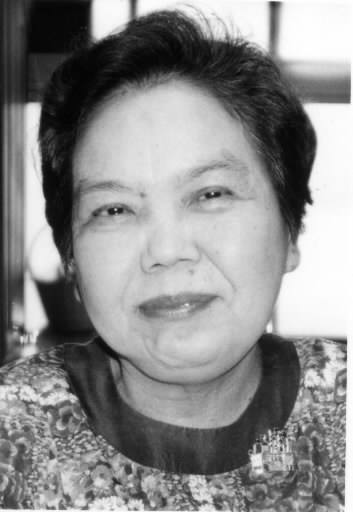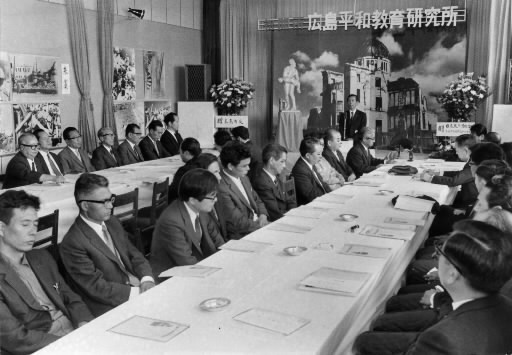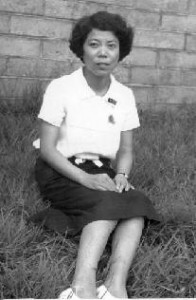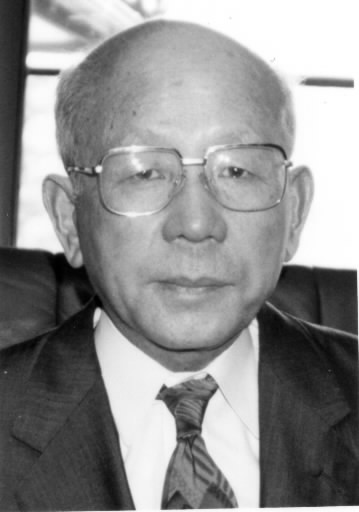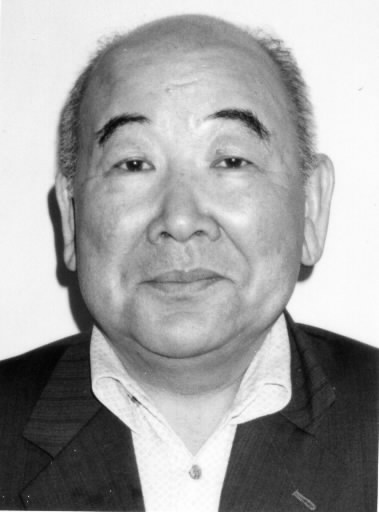History of Hiroshima: 1945-1995 (Part 24)
Mar. 15, 2013
Peace education
by Yoshifumi Fukushima, Staff Writer
Note: This article was originally published in 1995.
Peace education, born in the A-bombed city of Hiroshima, was a product of the piercing pain felt by A-bombed teachers, who had experienced the catastrophe of the world’s first atomic attack. This suffering was both mental and physical, with painful scarring from their wounds. Such teachers turned their anguish into a textbook with the hope of creating a more peaceful future, while continuing to convey to their students the message: “Never forget the atomic bombing of Hiroshima.” The atomic bomb stole away tens of thousands of unique lives. Handing down this experience has involved education designed to foster resistance to anything that attempts to deprive human beings of their precious lives.
While efforts to share the A-bomb experience continue, projects exploring the history behind A-bomb-related documents and data are also underway. Collecting and analyzing data describing the reality of the catastrophic attack, as well as information on administrative policies and practices involving A-bomb survivors (hibakusha), constitute a process of revealing the reality of the nuclear age. Both “education” and “research” have become steadfast efforts so that Hiroshima’s terrible fate will never be repeated.
A-bombed teachers devote themselves to peace education: Preaching “life,” using scars as teaching aids
The teacher’s heart was stung by her student’s comment: “Ms. Nakatani, your arm looks creepy.”
The teacher never wore a short-sleeved blouse, not even during the summer, so it was natural for children to wonder why. When she gently rolled up her sleeve, in response to their simple, innocent question, a keloid scar was revealed on her elbow.
“The atomic bomb did this...” This was around the time Tamae Nakatani, 63, an elementary school teacher and a resident of Naka Ward, began to open up, little by little, about the disaster. Nearly 20 years had passed by this point, and the children of Hiroshima no longer had firsthand experience of the bombing.
Ms. Nakatani suffered the atomic bombing while at school, located in the Minamitakeya district, 1.4 kilometers from the hypocenter. She was a second-year student at Shintoku Girls’ High School back then, and the school grounds were transformed into a virtual hell. Burned all over her body by the bomb’s heat rays, even today, 50 years later, the scarred heel on her left foot still aches.
“The atomic bombing was a load too heavy to bear,” Ms. Nakatani said. The gaze of children, and others, unnerved her and stirred desperation. Returning home, her heart would sink. When her mother sought to console her, she shrieked: “I’m in agony now because you nursed me and kept me alive for your own sake!” Her mother could only cover her face with the sleeve of her kimono. It was not until Ms. Nakatani had moved through her distress that she decided to open herself to others.
In 1969, the Hiroshima Prefecture Hibakusha Teachers’ Association was formed. At the first meeting following the group’s inauguration, Ms. Nakatani talked about her painful past, tears rolling down her cheeks. Akira Ishida, 67, a resident of Asakita Ward, who called for the establishment of the organization, said he will always remember the sight of Ms. Nakatani at that moment.
“At the inception of peace education, there were A-bombed teachers in Hiroshima who denounced the atomic bomb, overcoming their psychological pain and using their own scars as teaching aids,” Mr. Ishida said. About 3,000 A-bomb survivors were believed to be working in schools in the Hiroshima area. But the mental and physical suffering of these people, who were scattered across the prefecture, were ignored.
Mr. Ishida was riding in a streetcar, near the hypocenter, when the A-bomb exploded, but he miraculously survived. After becoming a teacher, he often had to be absent from work due to fatigue and was criticized for this by his students’ parents, among others. Each time he heard the news that an A-bomb survivor had died, he felt a gnawing anxiety, wondering if he would be next. He plunged into despair and resigned himself to this fate.
“With the description of the atomic bombs disappearing from textbooks,” Mr. Ishida explained, “teachers who were suffering from radiation-induced illnesses, and tended to be isolated, came together and summoned their courage to pursue education that would help prevent any more hibakusha from being produced. This became the teachers’ association.”
Two years before the Hiroshima Prefecture Teachers’ Association was established, Mr. Ishida had experienced a shock during a visit to East Germany. While descriptions of the atomic bombings had dwindled in students’ textbooks in Japan, he discovered a detailed account of the attacks in textbooks there. After the U.S. occupation of Japan ended, an elaborate discussion of the bombings was included in Japanese textbooks, but in the wake of revisions to the nation’s educational guidelines in 1958, the description contracted, becoming short and simple, due to restrictions imposed by the screening system involving textbooks.
“I was surprised when we compiled the results of the questionnaire,” said Tatsuo Sora, 67, then an A-bombed teacher and now a resident of Minami Ward, recalling the past. In 1968, a survey on the atomic bombing was conducted in elementary schools and junior high schools in the city of Hiroshima by the school staff union of Hiroshima Prefecture. Among those surveyed, 39 percent of the fifth graders and 71 percent of the ninth graders provided the correct answer when asked the date and time of the bombing. When it came to a question about whether they had learned details of the atomic bombing, including the damage it caused, only 12 percent of the fifth graders and 41 percent of the ninth graders responded positively.
The atomic bomb began to slip from Japanese textbooks. The A-bomb experience was fading, its continuity threatened. It was also an age when parents were turning their attention to the system of entrance examinations, and an increasing number of boys were becoming interested in “war games” as a result of the raging Vietnam War. When Mr. Sora asked his students to bring in war-related books, they promptly produced piles of such material.
In this context, that same year the school staff union of Hiroshima Prefecture resolved to launch their first efforts to carry out peace education classes in the schools, which led to the establishment of the Hiroshima Prefecture Hibakusha Teachers’ Association. In the first issue of the association’s in-house magazine, the determination of the A-bombed teachers was described in this way:
“What will happen if we remain silent? We must not let children repeat the horrific experience we suffered. Now is the time for us to stand at the forefront of the peace education movement.”
The path to peace education, though, proved rough. After Ms. Nakatani was transferred to a different elementary school, she continued to talk about her A-bomb experience with her students. But the principal called her actions “biased,” a label that mortified her when she had simply been striving to convey the horrific consequences of the atomic bomb.
This was in the early 1970s and Ms. Nakatani’s left leg was continuing to ooze bloody pus. With her fatigue growing, she finally collapsed. Ms. Nakatani sent a letter to Mr. Ishida, appealing for consideration toward A-bombed teachers. Even an LDP lawmaker, a member of the Committee on Social and Labor Affairs of the Upper House who was visiting Hiroshima to carry out a survey on the employment of A-bomb survivors, expressed concern about the lingering aftereffects of the atomic bombing. The deputy superintendent of Hiroshima City’s board of education came rushing over to Ms. Nakatani, apparently out of sorts over her direct appeal to the Hiroshima Prefecture Hibakusha Teachers’ Association.
The principal of Ms. Nakatani’s school offered to get her a wheelchair to address her fragile health. But there were no ramps for a wheelchair at the school. “His proposal sounded more like a call for me to quit,” she said. Her confidence in continuing to teach was shaken.
In this delicate state, Ms. Nakatani was provided support by the newly-established Hiroshima Institute for Peace Education. She also became a committee member and studied with university professors and A-bombed teachers, among others, twice a month. The more she learned about global nuclear issues, the more strongly she felt the significance of conveying the consequences of the atomic bombing, the first destruction wrought by nuclear arms.
“If I had not been a teacher, I couldn’t have been as sensitive to other people’s lives,” she said. “But, you know, children are so adorable.”
In June of 1972, on the anniversary of the establishment of the Hiroshima Institute for Peace Education, Ms. Nakatani read out a declaration. The institute would be a research base for organizing not only the firsthand accounts of the atomic bombings, but the entire picture of the nuclear age. Her voice shook with emotion, thinking, “At last, peace education will be recognized...” The declaration opened with the poem entitled “Give Back the Human,” written by Toge Sankichi, and the prologue to his book “Poems of the Atomic Bomb.”
“A-bombed teachers, and others, began to call peace education ‘education for the survival of the human race,’” Mr. Ishida said. Before the war, Mr. Ishida was a boy imbued with a military spirit. He was taught that death was virtuous and he swallowed this teaching whole. The holy war of his divine nation meant that others had to be killed. But in this war, the atomic bombs were dropped and the people of Japan died like worthless vermin.
Through his militarist upbringing and the A-bomb experience, Mr. Ishida has come to realize the importance of living, not dying. “Peace education teaches the dignity of human life,” he explained. “Peace education is intended to nurture human beings who will resist anything that puts people’s lives at risk of hardship or death.” Providing peace education has also been the duty and responsibility of A-bombed teachers who survived the disaster.
It took considerable time, however, for the feelings of the A-bombed teachers to take hold around them. When efforts to excavate A-bombed roof tiles from Hiroshima rivers were well underway, Ms. Nakatani displayed some roof tiles charred by the bomb’s heat rays in her school library. Her colleagues, though, showed no interest in the objects. Without uttering a word, Ms. Nakatani waited patiently. A year later, one of her students came to her and said, “Ms. Nakatani, I want these roof tiles to be treasured.”
Ms. Nakatani spoke with the student council at the school about building a monument made of the A-bombed roof tiles. In the summer of 1983, after collecting 40,000 yen in donations, a peace monument, modeled after the A-bomb Dome, was erected in the school yard. Another four years would pass before the whole school began to gather at the monument for a peace ceremony.
In other schools, too, there were many cases in which teachers themselves backed away from peace education with the excuse that they were too busy. Some parents also expressed a disdain for peace education, asking schools not to teach about the atomic bombing because the material would not be tested. Even in the A-bombed city of Hiroshima, the reception toward peace education was hardly favorable.
Still, A-bombed teachers and their supporters continued to create supplemental reading materials and provide a road map for fostering peace and teaching about the atomic bombing, which had remained focused on August 6 as a time of prayer. They added the perspective of Japan’s aggression prior and during World War II to this A-bomb education, centering on the damage wrought by the bombing. They also turned their eyes to hunger, poverty, and environmental issues. Now, as many as 500,000 students from around the country visit Hiroshima on school trips each year to learn about the A-bombed city.
However, concerns over the fading of the A-bomb experience, and its lack of continuity moving forward, remain. “I wonder if the peace education efforts we have made will continue to develop in the future, too,” said Mr. Ishida, voicing his frank feelings after the passing of a quarter of a century since the establishment of the Hiroshima Prefecture Hibakusha Teachers’ Association.
The concern that peace education has recently been pushed to the shadows has also touched Ms. Nakatani, who retired from teaching four years ago. She has heard that the chains of 1,000 paper cranes traditionally dedicated to the peace monument in the school yard are now being offered with less frequency.
Fifty years have passed since the end of the war. Mr. Ishida murmured, as if in monologue: “This anniversary is a gloomy milestone. The presence of the A-bombed city of Hiroshima can’t be felt in the situations confronting us. It hasn’t hit A-bomb survivors yet that it was good for them to have survived the bombing.” This A-bombed teacher sees the grim reality at home and abroad through a survivor’s eyes.
Though the Cold War has come to an end, a large number of nuclear weapons still exist in the world. The Nuclear Non-proliferation Treaty (NPT) was indefinitely extended without provision for a road map to pursue the elimination of these weapons. The Japanese government turns a blind eye to the victims of the atomic bombings, simply following the lead of the nuclear powers. Furthermore, the Atomic Bomb Survivor Relief Law is not equipped to take the feelings of the A-bomb survivors into account, and the movement against atomic and hydrogen bombs has reached an impasse.
Amid these circumstances, the A-bombed teachers are aging. Mr. Ishida’s face even revealed the sense of urgency. “I can’t feel sorry enough about the lack of effort made by Japan, the A-bombed nation, when it comes to speaking out about its A-bomb experience and pursuing the abolition of nuclear weapons,” he said. “The A-bombed city of Hiroshima has to take a tougher path to convey the A-bomb experience and build a global consensus about not repeating such a catastrophe through the use of nuclear arms.”
He added, however, “Once people forget the A-bombed city, the catastrophic consequences of the atomic bombing that Hiroshima suffered will occur again.” Above all, this conviction has always remained with Mr. Ishida.
Today, the number of school teachers who experienced the atomic bombing firsthand has dropped to nearly zero. A generational shift is inevitable. Still, Mr. Ishida hopes that the teachers and parents of subsequent generations will carry on the spirit of the A-bombed teachers, who spoke out about their experiences for the future of humanity.
In this summer of the 50th anniversary of the atomic bombing, the Hiroshima Prefecture Hibakusha Teachers’ Association will organize a peace gathering that will bring together about 10,000 Japanese and American parents and children in Hiroshima. The association does not seek to turn the gathering into a conference to leave a “will” to the next generation, but to make it an opportunity to “hand down the spirit” of the A-bombed teachers to tomorrow.
In the second winter following the establishment of the Hiroshima Prefecture Hibakusha Teachers’ Association, a female teacher passed away. Along with Ms. Nakatani, she had shared her hardships at that first meeting of the association. With a scarred line on her left cheek, she decided to give up on love. She endured stares of curiosity and continued to talk about her experience of the bombing to children. Her name was Shizuko Ogata and she died at the age of 44.
Cancer had confined her to bed and she was unable to leave any last words. The teacher, who had died young, had always said, “The atomic bomb will be with me until the day I die.” In February of this year, her former students at Danbara Elementary School held a memorial service at a temple in Higashi Ward to pay tribute to her. They still recall how tears would always appear in their teacher’s eyes when she spoke about the atomic bombing.
(Originally published on July 2, 1995)

